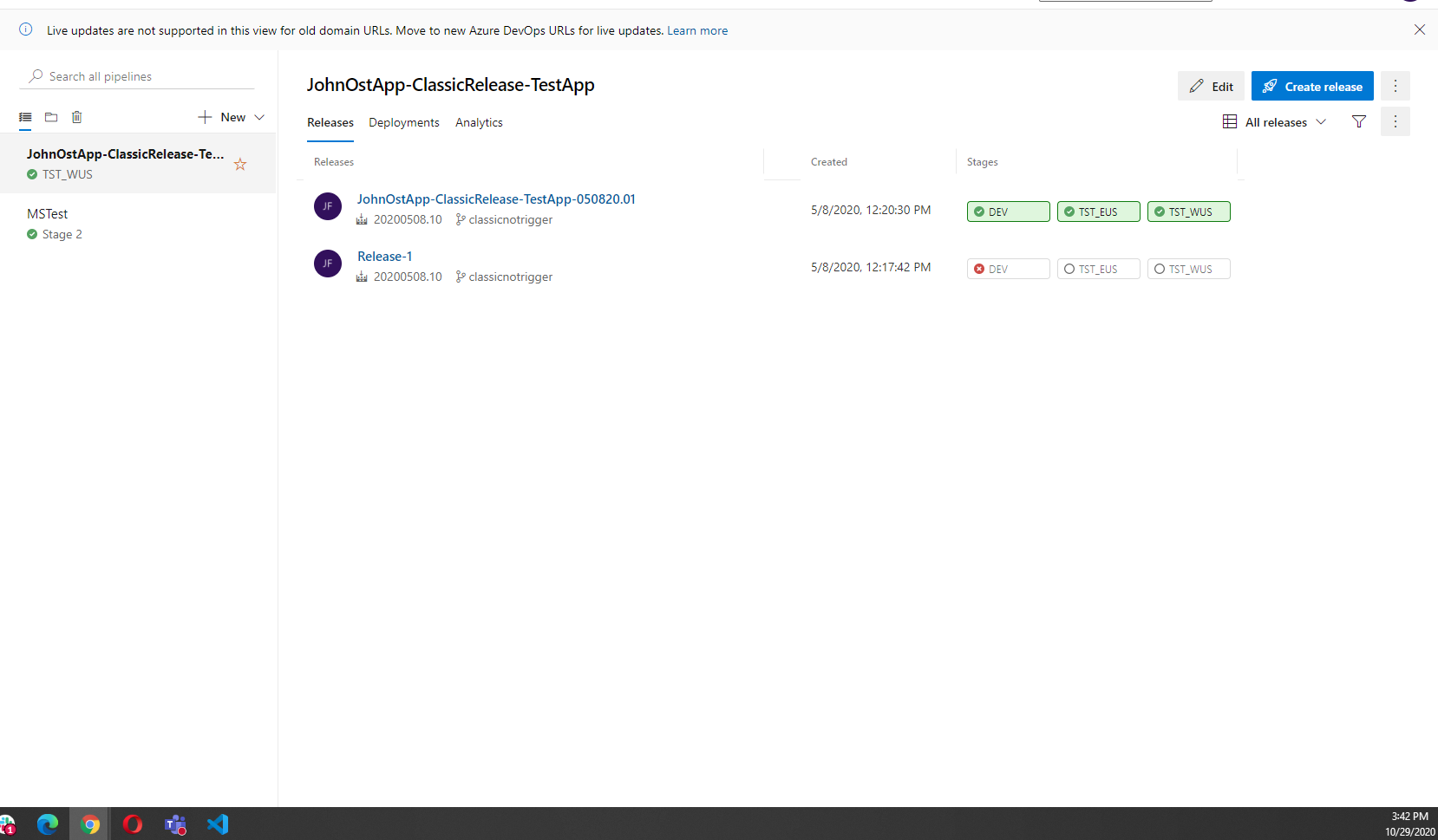Creating Helpful Names for Classic Releases
I know I am an advocate for YAML Pipelines to handle builds and releases; however, that doesn’t mean can’t take a minute to emphasis the importance of correctly naming Classic Releases. This one is a quick read but is a pet peeve of mine that I have noticed even the best developers fall victim to.
There is a saying when designing web elements “You can’t control something until you give it a name”. Mainly this refers to naming elements like tags, divs, buttons, etc…; however, this can carry over to development as well.
If you haven’t noticed the default values for the name of an individual Azure DevOps Release is just “Release-##”.

This to me is the definition of uselessness. Each Release is a different name, true. However; start thinking organizationally or more then just the scope of your project. How can we report releases across all of Azure DevOps. If we don’t give our releases the proper name then we can’t properly control or monitor releases organizationally. Think real fast 9/10 what’s the first thing you look for in this view of a release…..the Created Date! what if we put that into our release name somehow?
What if our releases looked something like:

Instantly now we can compare and contrast the two and see that the top one gives us a plethora of information. The first part is the name of our release. In this case “JohnOstApp-ClassicRelease-TestApp”. Traditionally this might be your Organization.ProjectName or ProjectName.ServiceName. The second part of this is the date the release was created followed by the version for that particular date. This combination ensures that every release name will be different.
To achieve this we need to set the Classic Release name to: $(Release.DefinitionName)-$(Date:MMddyy).$(Rev:rr)
In Azure DevOps this is in the “Options” tab of the release definition like below:

If this combination doesn’t fit your fancy then feel free to use any other available release variables
Again this is not a major change but can make your release management and organization look professional and easier to manage.
Discover more from John Folberth
Subscribe to get the latest posts sent to your email.
